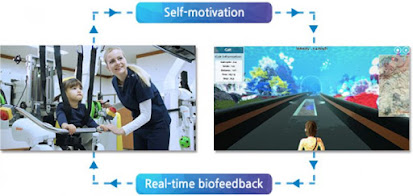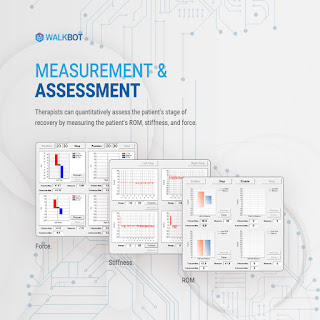Stroke
Stroke is a leading cause of movement disability. Hemiparesis/hemiplegia is the most common outcome of stroke, leading to movement deficits in the contralateral limbs to the side of the brain affected by the stroke. The main clinical characteristics observed in hemiparetic patients are: weakness of specific muscles, abnormal muscle tone, abnormal postural adjustments, lack of mobility, abnormal movement synergies, loss of joint coordination, and loss of sensitivity.
Thus, the rehabilitation goal in post-stroke subjects is to promote recovery of lost function, to allow independence and early reintegration into social and domestic life. Post-stroke patients require continuous medical care and intensive rehabilitation often requiring one-on-one manual interaction with the physical therapist. Unfortunately, present demands and budget restrictions do not allow this intensive rehabilitation. Hence, there is an urge for new technologies improving the efficacy and effectiveness of post-stroke rehabilitation. The available scientific literature suggests that the most effective rehabilitative interventions are those providing early, intensive, task-specific, and multisensory stimulation.
ROBOTIC ASSISTED REHABILITATION
THERAPY FOR STROKE
During the last two decades there have been remarkable developments in
robotic assisted rehabilitation therapy for promoting walking ability and
upper extremity motor function.
Rehabilitation robots for stroke can apply constant therapy for long periods and
allow for continuous monitoring of patient performance and progression, that
can be delivered to the therapist.
Well-coordinated multidisciplinary stroke care, including comprehensive
rehabilitation, combined with robot-assisted therapy works to provide a
beneficial treatment option for motor recovery of gait.
There have been many studies into the benefits of rehabilitation robots in assisting
patients who have suffered disability as a result of stroke. Whilst the results of the
studies were varied, it is the general consensus that robot-assisted therapy on gait
recovery delivered superior results in patients with subacute stroke, particularly
when applied in combination with conventional physiotherapy compared with
conventional therapy alone.
It was also concluded in a large participant study, that robot-assisted gait
training with regular physical therapy produced promising effects on locomotor
function in subacute stroke patients than regular physical therapy.
In all studies,
improvements were noted in gait speed, cadence, step length, and balance, as
well as reducing the double limb support period. Further, robot-assisted
therapy also showed improvements in arterial stiffness and increased peak
aerobic capacity.
The main advantage of electromechanical or robotic assisted walking devices
over conventional gait training, is that they reduce the need for intensive
therapist support, have been shown to increase early independent walking after
stroke, and could be also considered for patients who would not otherwise
practice walking.
Walkbot robot assisted rehabilitation system
The Walkbot System is the innovative hip-knee-ankle interlimb coordinated robot training system, which is designed to offer accurate proprioceptive, kinematic, and kinetic guidance, as well as variable error practice and high-intensity, repetitive task-specific, and interactive exercise for the paretic lower limb. Compared with current exoskeletal robot-assisted gait training systems, the Walkbot system is equipped with multi-segmental ankle-knee-hip joint actuators that provide an optimal, naturally coordinated, intersegmental locomotor control pattern. Furthermore, ankle-knee-hip joint actuators facilitate ankle dorsiflexion, which prevents foot drop and associated asymmetrical circumduction or hip hiking gait, thereby enabling safe ambulation without the risk or falling.

The Walkbot system provides an intelligent interactive mode which automatically accommodates spasticity or associated stiffness, assistance and resistance forces, walking speed, and hip, knee, and joint kinetics and kinematics according to the patient’s ongoing locomotor performance to maximize ‘automatic’ locomotor relearning, retention, and full recovery.
The Walkbot System is designed to provide these benefits in an enjoyable and motivational setting using virtual reality-augmented reality(VR-AR) to maximize active partition and associated locomotor recovery.
The Walkbot system can quantitatively assess kinematics, kinetics, and spasticity-related stiffness during treadmill walking. This information is utilized for sensorimotor feedback during locomotor training.
Furthermore the Walkbot system is designed to provide intensive training with minimal labor or physical stress to the therapist and provide multisensory stimulation training.








Comments
Post a Comment